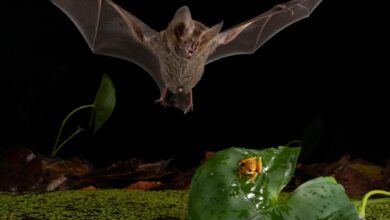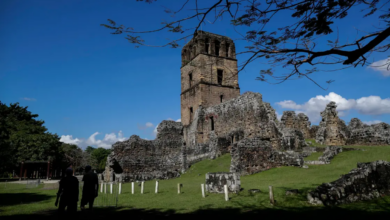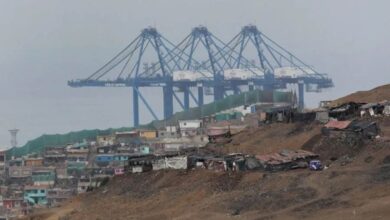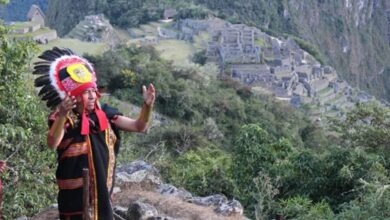Mangrove Honey, Women's Work: How Panama and Peru Turn Bees Into a Coastal Shield
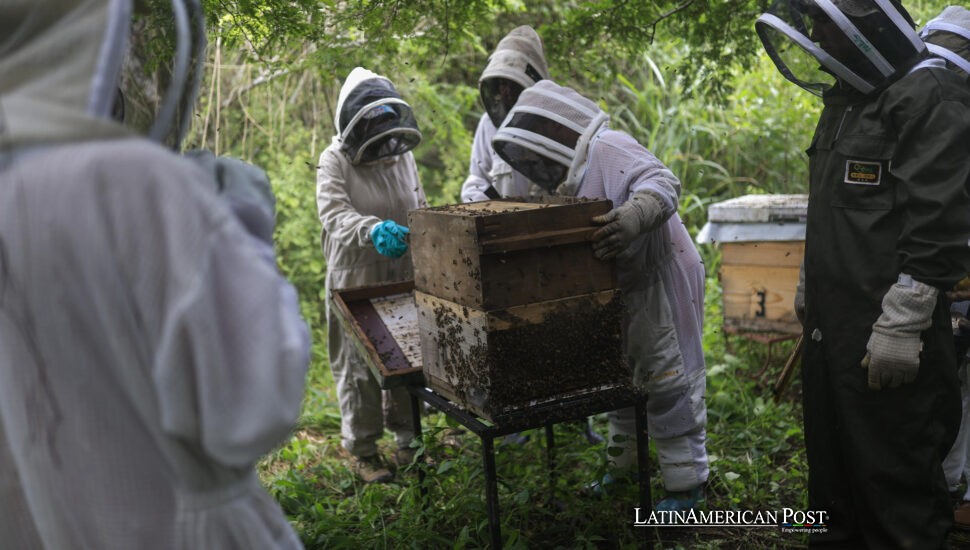
On Panama’s Pacific shore and Peru’s northern coast, women beekeepers are placing hives in mangroves, harvesting honey while restoring a climate shield. A cross-border project pairs science with tradition to generate income, protect biodiversity, and demonstrate that conservation and livelihoods can thrive.
Mangroves, Honey, and a Village Called Paris
At the edge of Bahía de Parita, more than 230 kilometers west of Panama City, the village of Paris wakes to the tide and the whisper of roots. The mangrove here is a pantry and pharmacy, a floodwall and a nursery, now also a buzzing workshop. Dressed in white suits and veils, eight members of the Association of Women Lovers of the Mangrove, Amuram, step off a sandy path and vanish into green, tending wooden hive boxes balanced between knotted stilts of prop roots. Frames draped in bees rise and fall; lids reseat with soft wooden thuds; a low, steady hum says the colonies are strong.
“The idea is to take honey, but also to conserve the mangroves,” said beekeeper Raquel Pascacio, who jokes she is first a friend of the forest and only then a producer. “We have many farmers around us. This helps them, and it helps us to have food. Honey is good, but how will we eat if there are no bees?” she told EFE, sketching a simple equation that binds pollinators to cassava, fruits, and coastal crops. Each hive can host up to 80,000 bees and, in a strong season, yield as much as six gallons (about 22 liters) in two months, cash flow that becomes soap, creams, pollen products, and the difference between getting by and getting ahead.
Climate-Smart Beekeeping, Backed by Science
What looks rustic is careful design. Panama is a mangrove giant, about 170,000 hectares of trees rooted on its Caribbean and Pacific shores, storing carbon, buffering storm surge, and sheltering fisheries. The stands are tough, but not invincible: warmer seas and irregular rains tilt the balance. In December, Amuram joined a bi-national initiative with Panama’s Institute of Agricultural Innovation (IDIAP) and Peru’s National University of Tumbes, backed by Spain’s development agency AECID. The premise is durable: build livelihoods that depend on healthy mangroves, and communities will become the forest’s fiercest stewards.
“This mangrove beekeeping can be an economic activity without harming the ecosystem, while using its potential,” said Itziar González, the Spanish Cooperation’s country coordinator in Panama, speaking to EFE. Fieldwork mirrors that promise. IDIAP researcher Ruth del Cid Alvarado slides sensors into hives to track the environmental variables that make or break a colony. “We monitor temperature and humidity, which are very sensitive for the colony,” she told EFE. “With these sensors, we can make timely technical adjustments. Right now we have a powerful rainy season with a lot of humidity and precipitation, and that is very sensitive for the bees.”
There is botany in the boxes, too. Mangrove mosaics brim with nectar sources, the white mangrove Laguncularia racemosa, the buttonwood Conocarpus erectus, feeding foragers that map the shoreline in looping flights before dancing directions onto the comb. The result is a dark, mineral honey with a hint of salt air and tannin, a taste of place you cannot counterfeit in a warehouse.
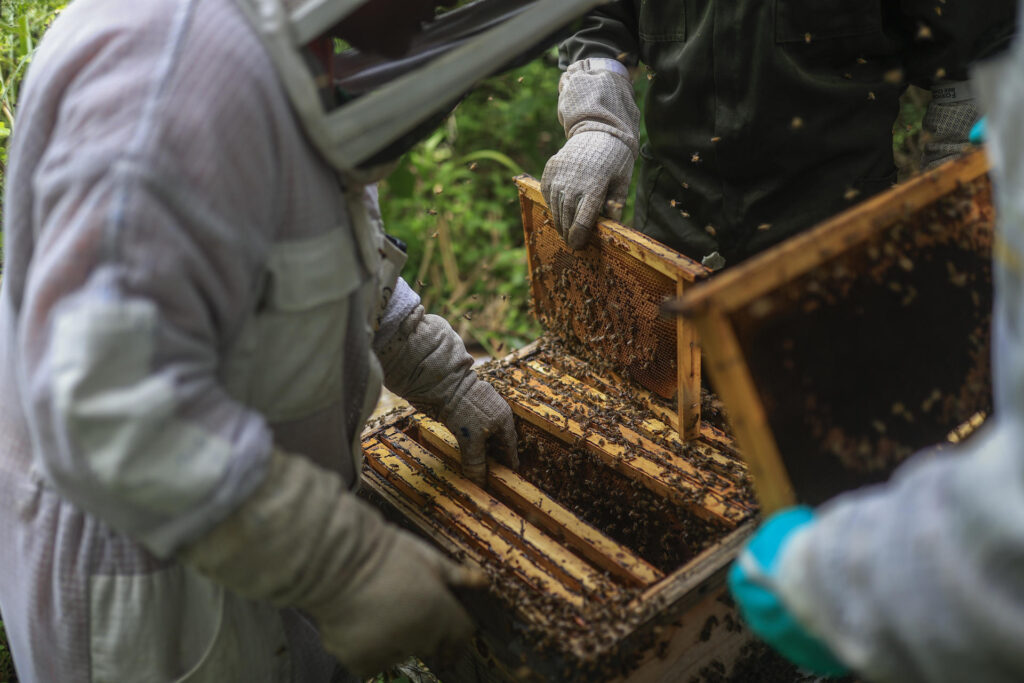
From Tumbes to Parita Bay, A Shared Classroom
The project’s classroom spans an ocean hour. In Tumbes, Peru’s far northwest, a 2,972-hectare mangrove sanctuary fans into the Pacific, its channels breathing in and out with the tide. There, researchers and communities work with melipona, stingless bees that yield less volume but produce a complex, medicinal honey prized across the Andes. “We’re analyzing the physical, chemical, microbiological, and nutritional properties of these honeys, from Peru and Panama,” said César Joel Feijoo Carrillo, a professor at the National University of Tumbes, in an interview with EFE. His team, partnering with the University of Santiago de Compostela, is pairing lab tables with muddy boots so measurements translate into money.
Feijoo underscored the model’s twist: with melipona, it’s “less but better.” Lower yields, higher value, if cooperatives can capture the premium. That margin funds the unglamorous elements that make rural products travel: better boxes and veils, cold storage, packaging, branding, and transport. It also pays to be patient; nectar flows on its schedule, not ours. Last week, Tumbes farmers and faculty crossed to Panama to compare notes, watch hive inspections, and fine-tune shared protocols: when to split a colony, how to shade boxes to tame heat swings, how to harvest without gutting a hive before a sodden week. The exchange is already changing practice on both coasts.
Honey Money and the Future of Coastal Protection
What makes the promise feel sturdy is how many problems it solves at once. Mangroves are carbon vaults and storm buffers —cheap, effective climate action that also anchors fisheries. But conservation without jobs is brittle. In Paris, Panama, women who once walked the forest for shellfish or firewood now walk it to tend an asset that compounds. Hives require care; mangroves require stewardship. The two laborers reinforce each other.
Benefits fan outward. Farmers on the forest fringe watch yields steady as pollination improves. Markets gain a local product with a story that travels, from stalls to urban boutique shelves. Schools host demonstrations, mini suits, tastings, and a simple lesson in how a white bloom on buttonwood ends up as amber in a spoon. The rhythm of life lengthens; households start to think in seasons, not days.
Risks persist. Heavy rains spike hive humidity and breed disease; drought stunts nectar flows. The answer is adaptation, sensors for early warnings, diversified forage, shade cloths, and a cross-border troubleshooting network that flags problems before they cascade. Scale also matters. A few dozen hives can transform a neighborhood; thousands require planning to avoid saturating markets or straining forage. But the women of Amuram are not chasing a boom. They are building a livelihood that fits the ecology.
For González, Feijoo, and del Cid, the payoff is social as much as ecological. Training, equipment, and cooperative structures give women a platform and a revenue stream. The act of walking the mangrove in a beekeeper’s veil becomes a quiet manifesto: caretakers and beneficiaries are the same people. As melipona honey from Tumbes and mangrove honey from Parita Bay gain reputations, value chains stretch into places that were once treated as endpoints rather than nodes. “This is a win-win,” Feijoo told EFE. “The ecosystem wins, the communities win, the researchers win, and everyone who uses honey and its derivatives wins.”
Science, Story, and the Market That Listens
Taste is an argument, and this honey makes a beautiful case. Darker than mountain florals, thick with the hint of sea fog, it carries the chemistry of a living map. The project treats that flavor as data, lab profiles that certify origin and quality, batch numbers linked to specific stands, QR codes that carry a shopper from a market in Lima or Panama City back to a frame set between roots. Provenance isn’t just branding; it’s bargaining power for small producers in a crowded world.
With that proof comes leverage. Cooperatives can negotiate better terms with buyers, command price premiums for verified mangrove or melipona honey, and finance the mundane essentials, labels, jars, cooled storage, and a motor strong enough to keep the extractor steady. The science feeds the story, and the story feeds the ledger. “Less but better,” as Feijoo says, becomes not a slogan but a blueprint.
Where Bees Lead, Forests Follow
Back at Bahía de Parita, the tide has turned. The women stack smokers and veils in a plastic tote, slide sticky frames into a crate, and shoulder their gear toward the village. Behind them, the mangrove murmurs and the bees keep writing the day’s bright lexicon across the green. Pascacio puts it in the plainest terms. Honey is money, yes. But without bees there is no fruit, and without mangrove there is no shield.
What happens next will be decided in small, steady acts: a sensor warning answered on a wet afternoon, a workshop where girls try on veils and see themselves in white, a shipment whose label tells a story that makes a buyer pause. Conservation and livelihood can share the same root system. On Panama’s Pacific and Peru’s northern coast, the proof is in the jar, and in the forest still standing where the tide runs slow.
Also Read: Peru’s Living Mosaic: How the Maras Salt Mines Keep Ayni Alive

